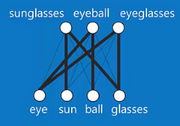
One might ask the same about birds! :P
(Keep in mind the distinction between "the map and the territory", the following will hopefully be useful in creating accurate "maps".) There’s different ways to say what something “is”. For example a hammer. You can talk about:
- its form
- what it does (“black boxed“), its outcomes/consequences, whether an intended purpose or not
- how it does what it does, the means of causing its consequences, and any internal operation it has (inside the "black box")
- what it is made of
- how it is made (what caused it to be as it is)
- its whole life history (which may include sitting around all day in a tool box)
- other properties (hard and strong, heavy)
- other categories it belongs to
For hammers, like for many things, an intensional definition can be developed. In the case of hammers I think it would mostly have to do with its function, what we use it to do.

"Deep Learning", recognizing arrangements of parts into patterns.
See also:
Though usually, a ton of these ways of looking at the thing are semantically linked (they "come together") into a larger concept. Even degree or probability might go into the concept. An ice cream sandwich might be “a sandwich” in some sense, but when someone says they are bringing you “a sandwich” you’d be rather confused if it turned out to be an ice cream sandwich. And yet clearly the two have enough similarity in form and purpose that it makes sense to use the name “ice cream sandwich” rather than “ice cream mystery object”, as if it were a wholly unfamiliar shape.
See also:
- Prototype Theory
Deep Learning, Deep Learning Demystified, Deep Learning Lecture 1: Introduction
- Concepts